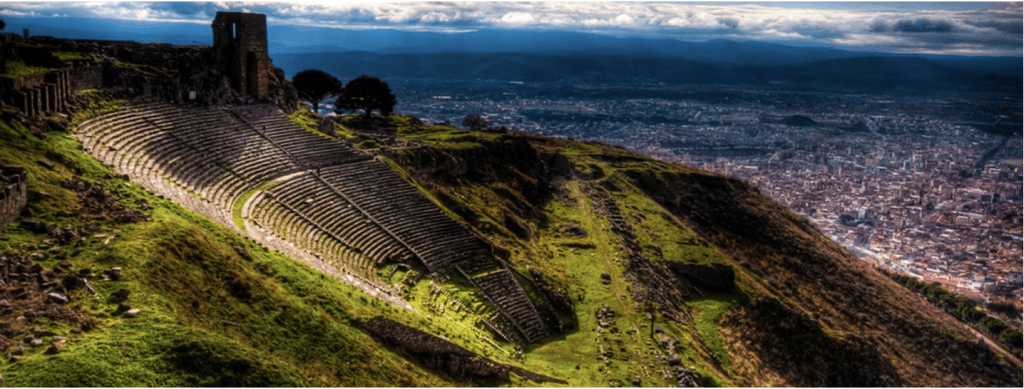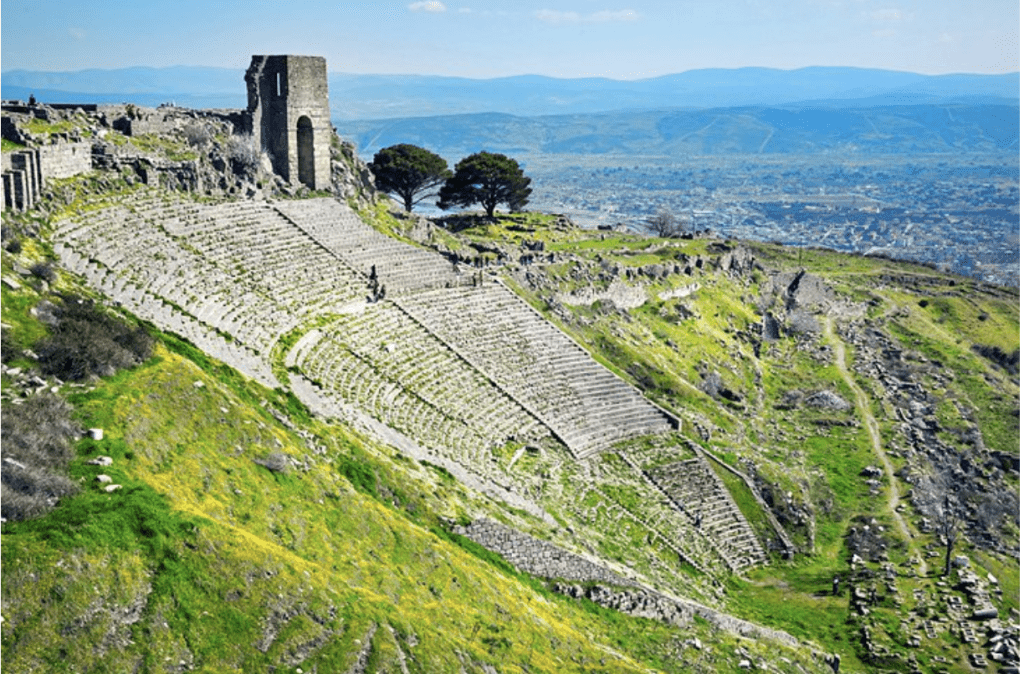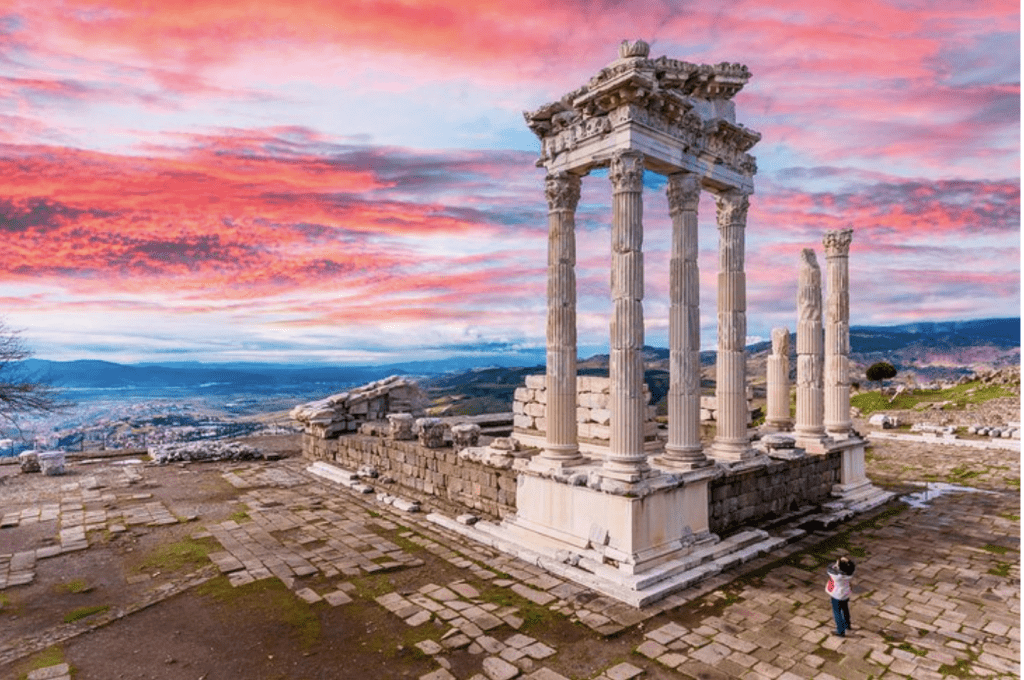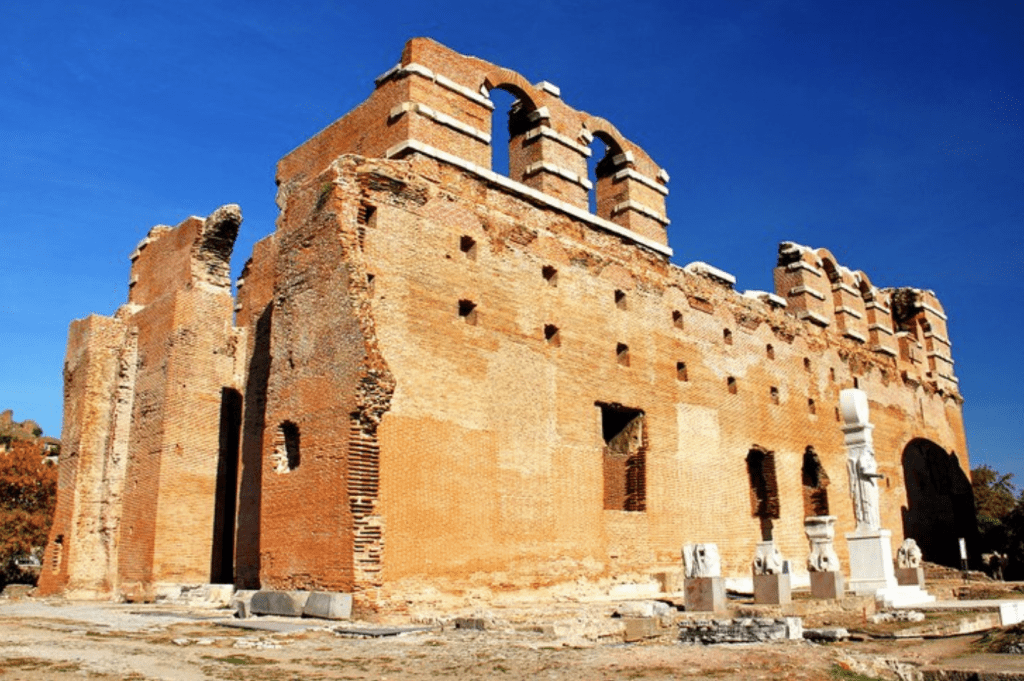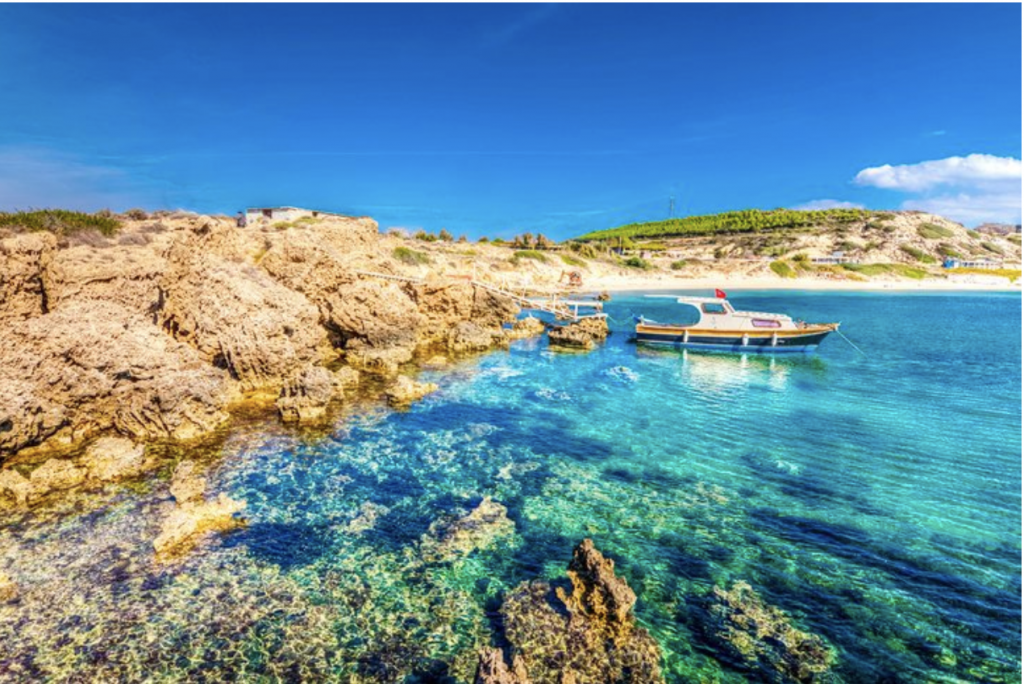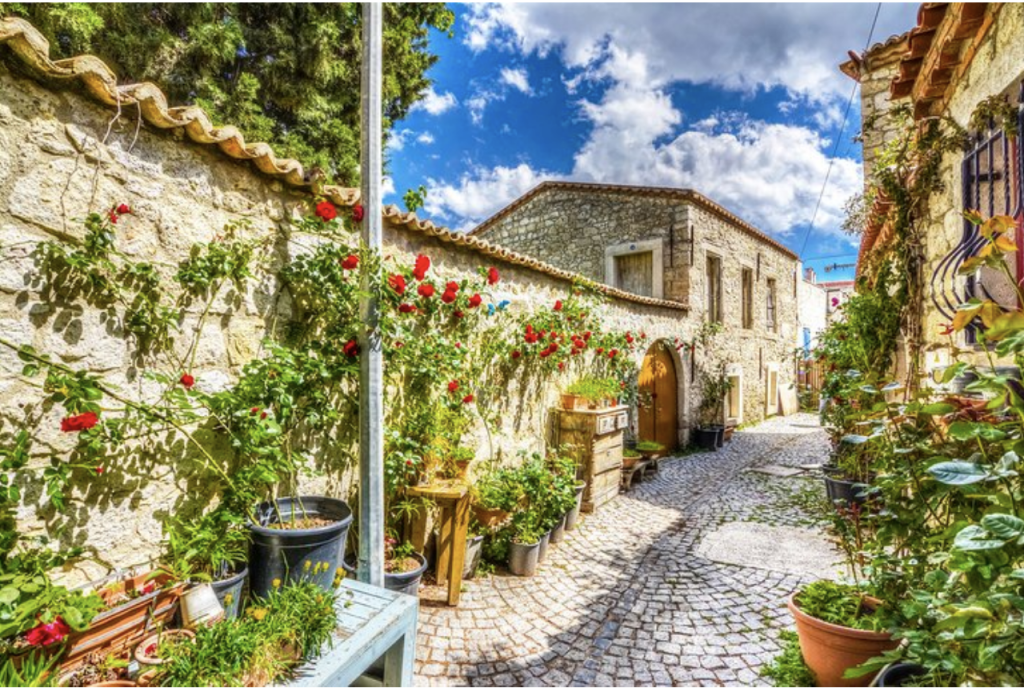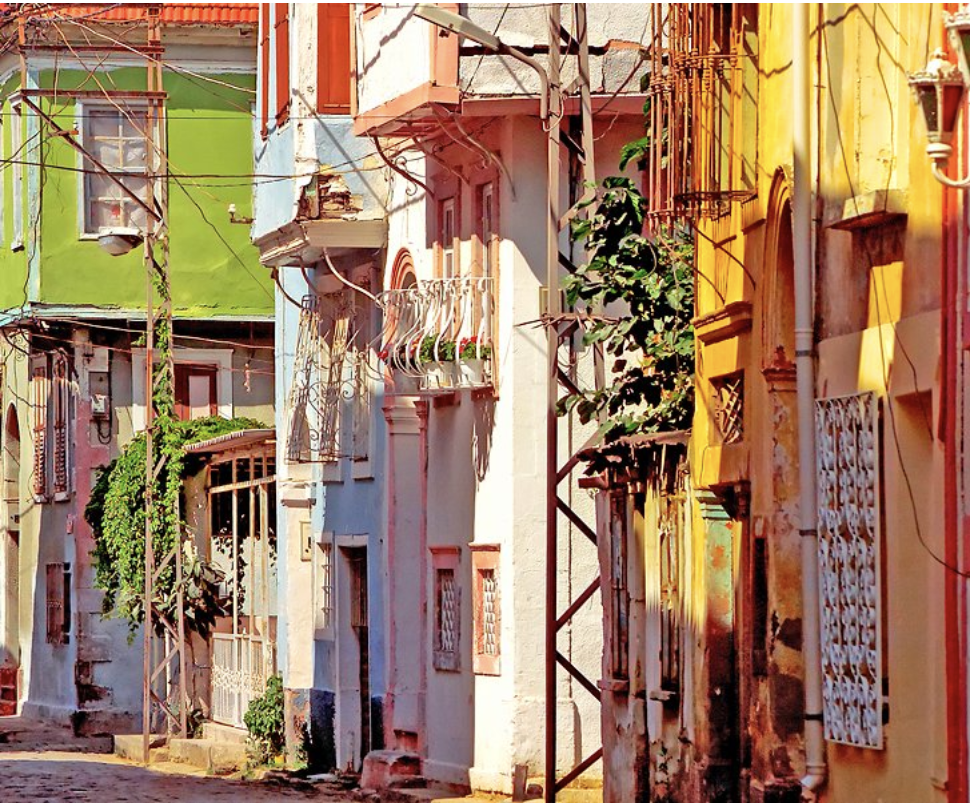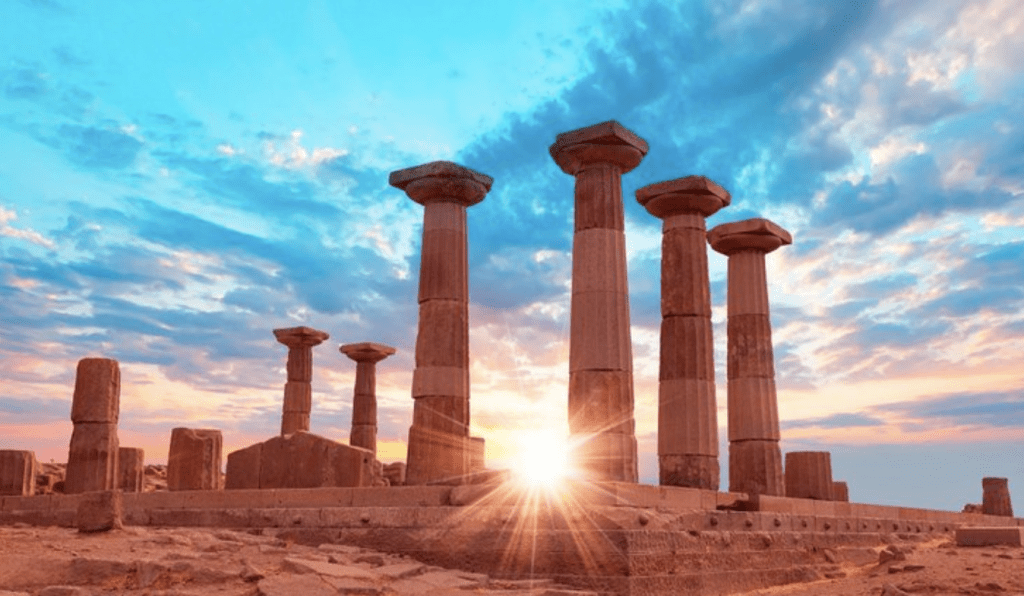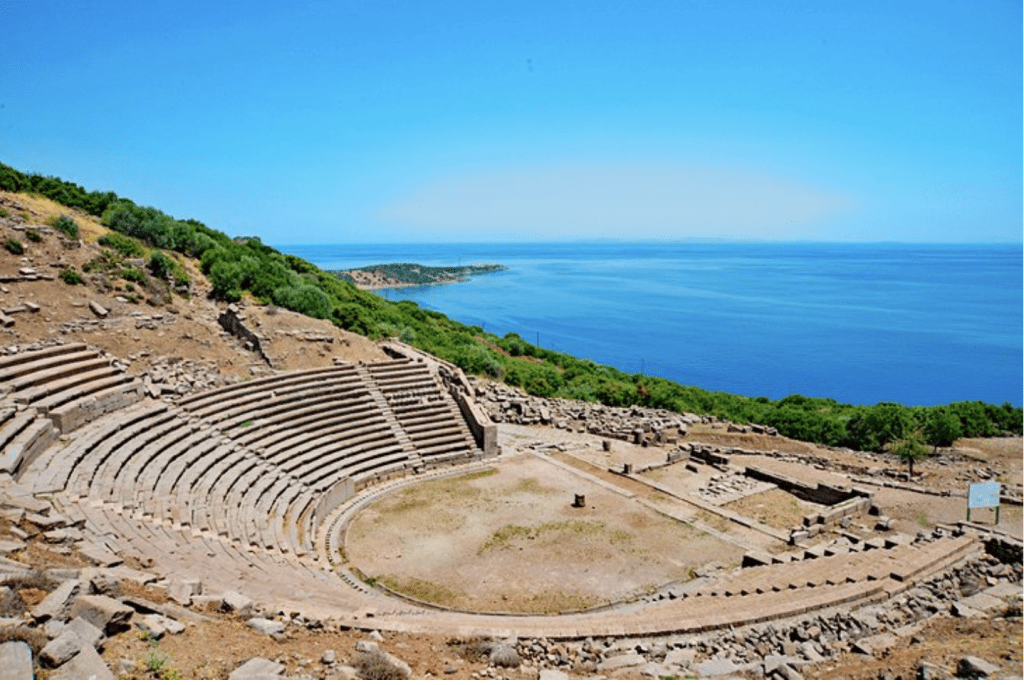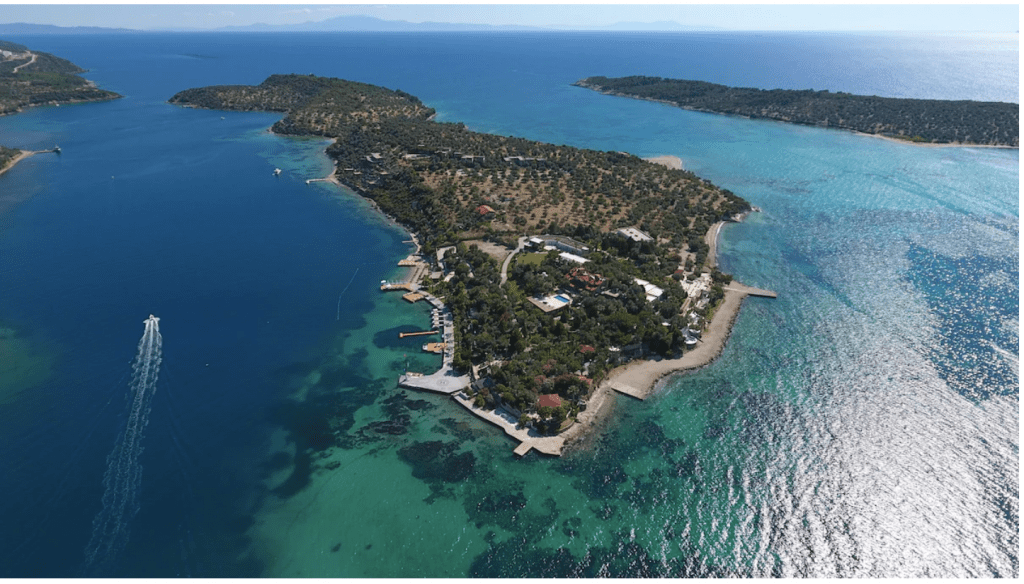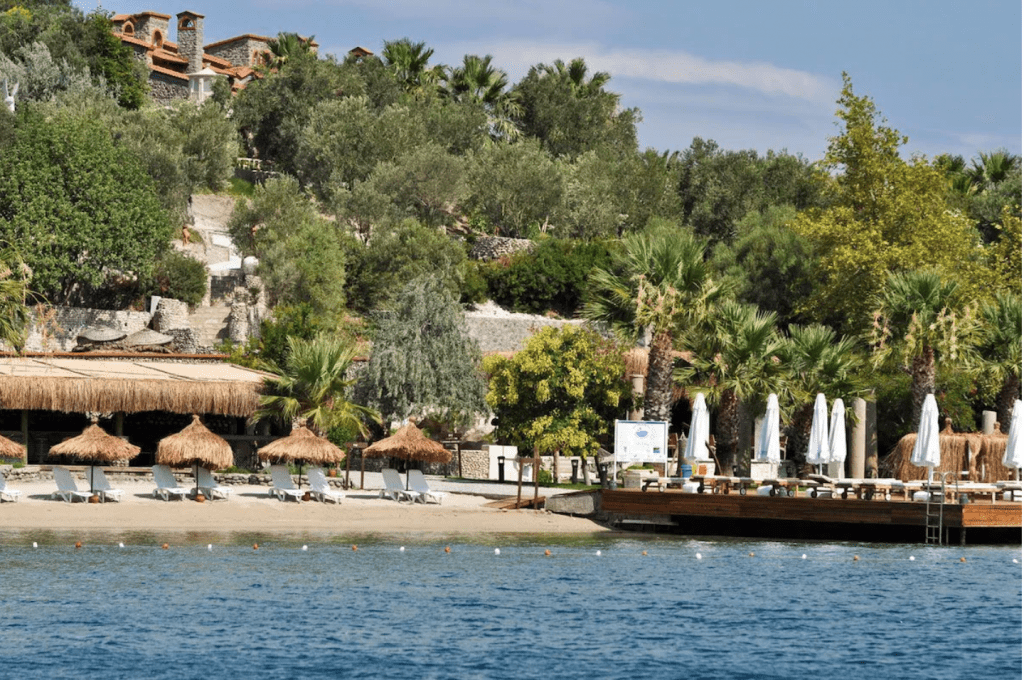Welcome to Summer Journey Milestone #7: Pergamum!
In the Bible….
Pergamum is one of the seven churches to receive a letter from the “Angel, the divine messenger”. The letter commends the church for remaining in faith. Yet, the letter also warns of the judgment to come because some in the church at Pergamum accepting false teachings of Baalam and the Nicolaitans. As a result, there is idolatry in the church. Of course, this is something to beware of in a Christian’s life today, too.
A Few Quick Facts On Pergamum
- This natural fortress towers 1,300 feet above the valley below between two rivers, the Selinus and the Cetius.
- After the death of Alexander the Great, one of his generals, Lysimachus gains control of western Asia Minor. As a result, he stores much of his immense treasure in the citadel at Pergamum.
- The city served as the capital of the Attalid empire for over a century.
- In Roman times Pergamum’s population was estimated at 200,000.
- Pliny the Elder called the city “the most famous place of Asia”.
Religious Facts
- The first imperial cult temple in Asia, the temple of Rome and Augustus, was built in Pergamum in 29 BC.
- In the early 2nd century, Pergamum also won the right to build a second imperial cult temple for Trajan.
- The illusion to “white stone” in Revelation 2:17 is difficult to interpret. However, it is a possible reference to a white stone or wood slab inscribed with a decree issued by Fabius, the governor of Asia, around 9 BC. This slab, placed in the imperial temple, decreed that Augustus’ birthday to be an official holiday. The emperors made the same claim to deity as Jesus, calling themselves lord, savior, creator and god.
- Local church leader Antipas faced martyrdom by the Roman authorities for his witness for Christ in Pergamum.
- The Roman governor of Asia exercised the “right of the sword” in his province. Hence the image of Jesus holding the “sharp, double-edged sword” in Revelation 2:12 asserts that Jesus holds an ever higher authority than the governor
Some History Of Pergamum, Milestone #7 In Our Summer Journey Through Turkey
Pergamum (Greek-Pergamon) is an ancient Greek city in Mysia, situated 16 miles from the Aegean Sea. The city sits on a lofty, isolated hill on the northern side of the broad valley of the Caicus (modern Bakır) River. The site is occupied by the modern town of Bergama, in the province of İzmir, Turkey. Pergamum existed from the 5th century BCE, but became important only in the Hellenistic Age (323–30 BCE). At that time, it served as the residence of the Attalid dynasty. Their fortress and palace stood on the peak of the hill, while the town itself occupied the lower slopes. Under the Roman Empire the city was situated on the plain below.
Rulers- The Attalids
Pergamum had formal autonomy under the Attalids. However, the Attalids interfered in most aspects of civic government. Initially they ruled Pergamum as vassals of the Seleucid kingdom, but Eumenes I declared himself independent of Antiochus I (263 BCE). When he died in 241, his nephew, Attalus I, came to power. By 188 BCE, the original Attalid territory around Pergamum (Mysia) grew quite a bit. Territorial acquisitions included Lydia (except for most Greek coastal cities). In addition, part of Phrygia, Lycaonia, and Pisidia (from 183 BCE) were acquired by the Attalids. This expansion was accomplished as the result of Eumenes II’s alliance with Rome in its conflict with the Seleucid Antiochus III.
Rulers – The Romans
When Eumenes’ son and second successor, Attalus III, died without an heir, he bequeathed the kingdom to Rome (133).It was at this time the city became the first capital of the new province of Asia. Rome accepted it and set up the province of Asia (129), which included Ionia and the territory of Pergamum, but left the other regions to neighboring kings, who were clients of Rome. Pergamum’s population was about 200,000 at this time. The kingdom of Pergamum yielded much wealth, especially in agricultural surpluses and silver, first to the Attalid rulers and later to Rome.
Artwork
The Attalids made the city of Pergamum one of the most important and beautiful of all Greek cities in the Hellenistic Age. It is one of the most outstanding examples of city planning in that period. They built a library excelled only by that at Alexandria. The kings after Attalus I collected many works of art from Greece to adorn the city’s temples and courtyards and also commissioned many works of sculpture, painting, and decoration from resident artists. Attalus I was an avid collector of paintings and sculpture. The collection he kept in Pergamum is the first known private art collection in the western world.
In 1878, the Berlin Museum began excavations of the area. As a result, archaeologists reconstructed the plan of the most important areas of the Hellenistic city. Its monuments include a theatre, the temple to Athena Nicephorus, and the great altar of Zeus. This altar has a richly decorated frieze, which is a masterpiece of Hellenistic art. A part of the altar and its surviving reliefs are now restored and stand in the Pergamon Museum in Berlin.
Building
The civic structures of the lower city included a large marketplace, a gymnasium, and temples of Hera and Demeter. Roman remains include an amphitheater, a theatre, and a racetrack. The early Attalids erected the first structures of the upper (royal) city. But the later kings Eumenes II and Attalus III were chiefly responsible for the city’s great architectural and artistic reputation. After the fall of Rome, the Byzantines rule Pergamum. Then the city passes into Ottoman hands early in the 14th century.
Time To Explore Summer Journey Milestone #7: Pergamum
Admire Pergamum’s Acropolis
Tour The Temple of Trajan
Check out the Red Basilica:
This massive red-brick ruin sits in Bergama town. It was built by Hadrian (CE 117-138) as a temple dedicated to the gods Serapis and Isis.
During the Byzantine era, it was converted into a church and dedicated to the Apostle John. He named Pergamum as one of the seven churches of the Revelation (also sometimes known as the seven churches of Asia Minor).
During the time John wrote the letters that would become the Biblical book of The Revelation (around CE 96), Pergamum’s Christian congregation (referred to as the Pergamum church) suffered great persecution. They were regarded as a seditious sect. As a result, The Book of Revelation refers to Pergamum as the place “where Satan has his throne.”
Relax on Bozcaada
Soak Up the Scene in Alaçatı Village
Stroll the Historic Lanes of Ayvalık
Check Out the Ruins of Assos
I’m ravenous – How bout you?!
Tonight’s dinner will be at Cigirtna Evi for some good ol’ Turkish home cooking!
What a day! Time for some shut eye at our hotel, Kalem Island Oliviera Resort, before another day of adventure.
Milestone #8 is Ephesus!
ONLY 102 MILES AWAY…
However, we will be dividing this in half for a challenge of 51 miles.
NOTE: NO Team Challenge Bonus Points THIS Week!

